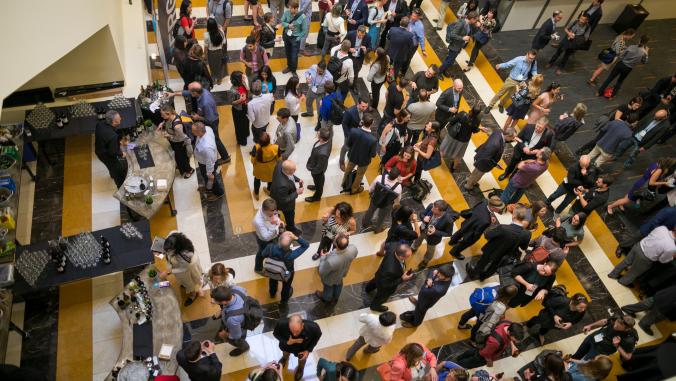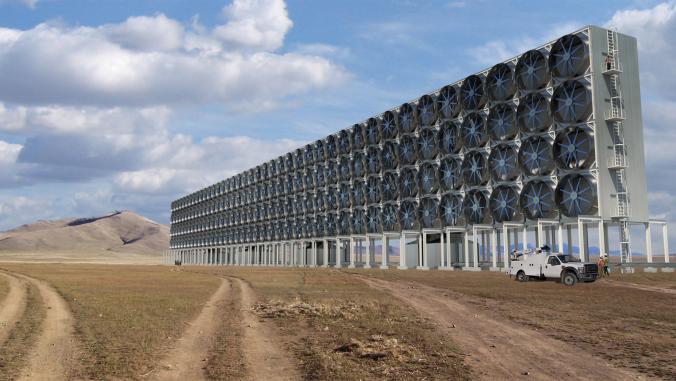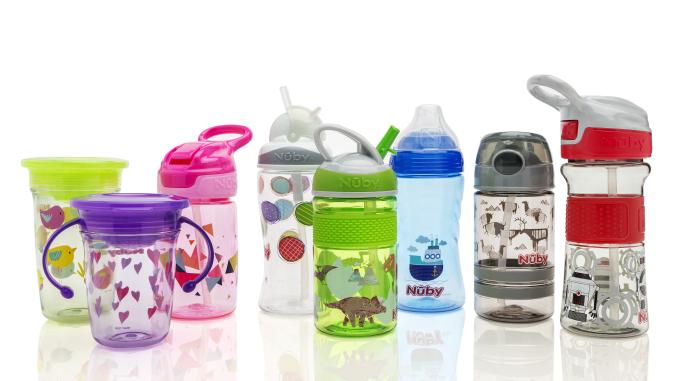Fuel cells: A $2 billion secret of the clean economy
While the expectation was that fuel cells would take off as an alternative fuel source for autos, they have created a $2 billion market for themselves, off road.

While few were looking, and while there seemed to be little energy news beyond the occasional automotive announcement (which most people dismiss as a futuristic longshot), fuel cells quietly have been finding valuable niches, particularly in the industrial world.
A recent report by the Fuel Cell & Hydrogen Energy Association (PDF) said that 9 percent of Fortune 500 companies and 23 percent of Fortune 100 companies are using fuel cells in some aspect of their operations.
The current market in industrial fuel cells has hit the $2 billion mark with more than 13,500 units deployed.
The primary uses are for backup power generation and material handling equipment. The current market in industrial fuel cells has hit the $2 billion mark with more than 13,500 units deployed.
While one might question the practicality and affordability of using fuel cells for backup power, it turns out that they are well-suited to the role. Companies cite a variety of reasons for using fuel cells for distributed power generation, including:
- An assured, reliable electricity supply
- Better energy management control
- Clean, renewable energy boosts the company’s image
- DG reduces energy costs
Backup plants also can be used for peak shaving and other demand management schemes. Large electric customers typically pay demand charges that raise costs during periods of high demand. By producing their own power during these periods, industrial customers can save money. Fuel cells tend to have rapid startup times as compared to diesels and are also far cleaner.
Other savings accrue from "cost savings on electricity or fuel purchases; emissions savings from being a more efficient, non-combustion technology; time savings from less maintenance, fewer fuelings and longer run time; and water savings at a time where droughts are hitting some states so hard that restrictions are being imposed on water use," the report said.
The Wonderful Company, a California producer of health foods and beverages, estimated savings of $63 million over 20 years on its initial investment of $16 million after incentives on 3 MW of fuel cell capacity. The investment is expected to pay for itself in 6.5 years.
Some companies have been able to move completely off the grid, combining fuel cells with solar and other renewables. That’s what Apple did at its Malden, North Carolina facility in 2014, saving some 92,306 metric tons of CO2 in the process.
Fuel Cell Energy has been installing a large number of units in large scale utility grid-connected markets in South Korea. The company also recently demonstrated the use of its molten carbonate fuel cells as a way to capture carbon dioxide while producing power at the same time.
While mobility is still an elusive target for fuel cells on the open road, they have found a lucrative niche market in the area of material handling equipment, particularly forklift trucks.
Water is another critical area where fuel cell technology helps, especially in places such as California. While thermal power plants require millions of gallons per year, fuel cells require little, if any, water. Doosan Fuel Cell America estimated that each of its 400 kW systems can save 2 million gallons per year compared to the grid. Bloom Energy said its 1 MW system can save up to 86 million gallons. (As both fuel cells use essentially no water, the apparent difference between the two lies in the choice of reference level for a default power plant used for comparison.)
While mobility is still an elusive target for fuel cells on the open road, they have found a lucrative niche market in the area of material handling equipment, particularly forklift trucks. The fuel cells take the place of batteries. According to Plug Power CEO Andy Marsh, this is largely due to productivity. Forklifts go out of service to have their batteries changed during a work shift, while fuel cells last longer and take less time to refill (two minutes versus 13). They also cost less to operate. More than 7,500 fuel cell powered forklifts are in operation across the U.S. Big box stores such as Walmart, Home Depot and other retailers such as Kroger and Wegmans are using them.
This story first appeared on:





